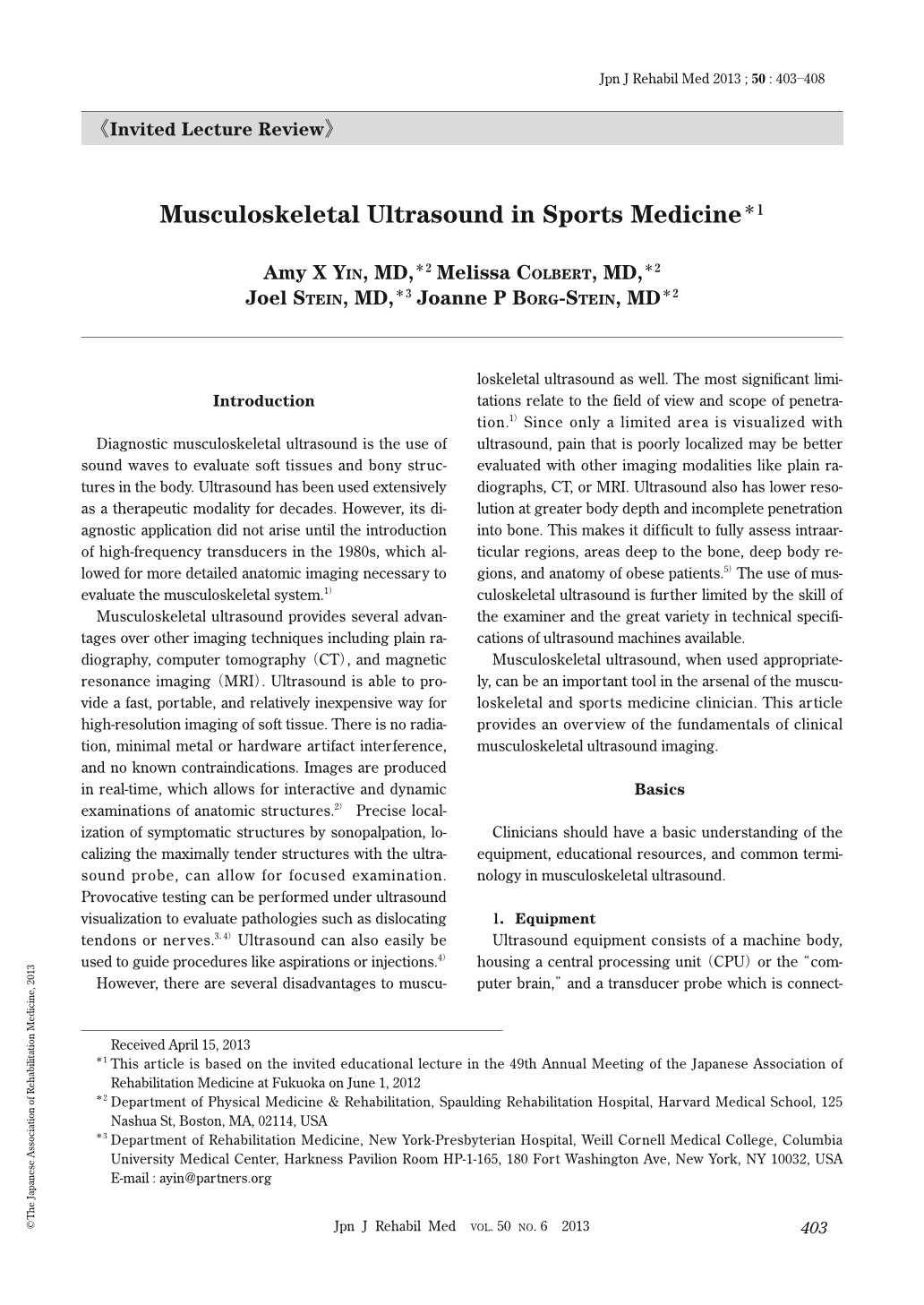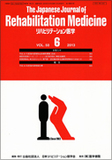Japanese
English
- 販売していません
- Abstract 文献概要
- 1ページ目 Look Inside
- 参考文献 Reference
Introduction
Diagnostic musculoskeletal ultrasound is the use of sound waves to evaluate soft tissues and bony structures in the body. Ultrasound has been used extensively as a therapeutic modality for decades. However, its diagnostic application did not arise until the introduction of high-frequency transducers in the 1980s, which allowed for more detailed anatomic imaging necessary to evaluate the musculoskeletal system.1)
Musculoskeletal ultrasound provides several advantages over other imaging techniques including plain radiography, computer tomography (CT), and magnetic resonance imaging (MRI). Ultrasound is able to provide a fast, portable, and relatively inexpensive way for high-resolution imaging of soft tissue. There is no radiation, minimal metal or hardware artifact interference, and no known contraindications. Images are produced in real-time, which allows for interactive and dynamic examinations of anatomic structures.2) Precise localization of symptomatic structures by sonopalpation, localizing the maximally tender structures with the ultrasound probe, can allow for focused examination. Provocative testing can be performed under ultrasound visualization to evaluate pathologies such as dislocating tendons or nerves.3,4) Ultrasound can also easily be used to guide procedures like aspirations or injections.4)
However, there are several disadvantages to musculoskeletal ultrasound as well. The most significant limitations relate to the field of view and scope of penetration.1) Since only a limited area is visualized with ultrasound, pain that is poorly localized may be better evaluated with other imaging modalities like plain radiographs, CT, or MRI. Ultrasound also has lower resolution at greater body depth and incomplete penetration into bone. This makes it difficult to fully assess intraarticular regions, areas deep to the bone, deep body regions, and anatomy of obese patients.5) The use of musculoskeletal ultrasound is further limited by the skill of the examiner and the great variety in technical specifications of ultrasound machines available.
Musculoskeletal ultrasound, when used appropriately, can be an important tool in the arsenal of the musculoskeletal and sports medicine clinician. This article provides an overview of the fundamentals of clinical musculoskeletal ultrasound imaging.
Introduction
Diagnostic musculoskeletal ultrasound is the use of sound waves to evaluate soft tissues and bony structures in the body. Ultrasound has been used extensively as a therapeutic modality for decades. However, its diagnostic application did not arise until the introduction of high-frequency transducers in the 1980s, which allowed for more detailed anatomic imaging necessary to evaluate the musculoskeletal system.1)
Musculoskeletal ultrasound provides several advantages over other imaging techniques including plain radiography, computer tomography (CT), and magnetic resonance imaging (MRI). Ultrasound is able to provide a fast, portable, and relatively inexpensive way for high-resolution imaging of soft tissue. There is no radiation, minimal metal or hardware artifact interference, and no known contraindications. Images are produced in real-time, which allows for interactive and dynamic examinations of anatomic structures.2) Precise localization of symptomatic structures by sonopalpation, localizing the maximally tender structures with the ultrasound probe, can allow for focused examination. Provocative testing can be performed under ultrasound visualization to evaluate pathologies such as dislocating tendons or nerves.3,4) Ultrasound can also easily be used to guide procedures like aspirations or injections.4)
However, there are several disadvantages to musculoskeletal ultrasound as well. The most significant limitations relate to the field of view and scope of penetration.1) Since only a limited area is visualized with ultrasound, pain that is poorly localized may be better evaluated with other imaging modalities like plain radiographs, CT, or MRI. Ultrasound also has lower resolution at greater body depth and incomplete penetration into bone. This makes it difficult to fully assess intraarticular regions, areas deep to the bone, deep body regions, and anatomy of obese patients.5) The use of musculoskeletal ultrasound is further limited by the skill of the examiner and the great variety in technical specifications of ultrasound machines available.
Musculoskeletal ultrasound, when used appropriately, can be an important tool in the arsenal of the musculoskeletal and sports medicine clinician. This article provides an overview of the fundamentals of clinical musculoskeletal ultrasound imaging.

Copyright © 2013, The Japanese Association of Rehabilitation Medicine. All rights reserved.


